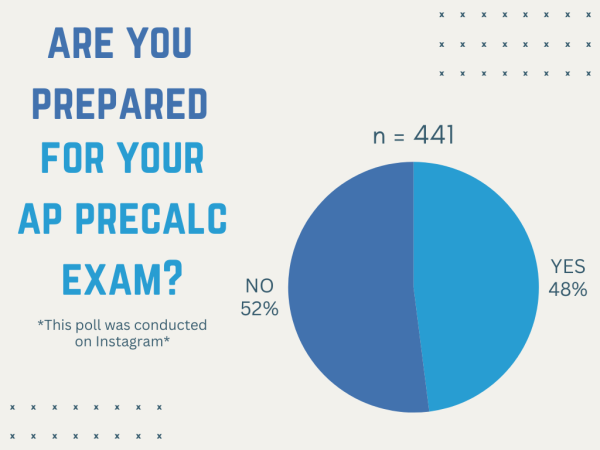

How Much Time Do College Students Spend on Homework
by Jack Tai | Oct 9, 2019 | Articles
Does college life involve more studying or socializing?
Find out how much time college students need to devote to their homework in order to succeed in class.
We all know that it takes hard work to succeed in college and earn top grades.
To find out more about the time demands of studying and learning, let’s review the average homework amounts of college students.
HowtoLearn.com expert, Jack Tai, CEO of OneClass.com shows how homework improves grades in college and an average of how much time is required.
How Many Hours Do College Students Spend on Homework?
Classes in college are much different from those in high school.
For students in high school, a large part of learning occurs in the classroom with homework used to support class activities.
One of the first thing that college students need to learn is how to read and remember more quickly. It gives them a competitive benefit in their grades and when they learn new information to escalate their career.
Taking a speed reading course that shows you how to learn at the same time is one of the best ways for students to complete their reading assignments and their homework.

However, in college, students spend a shorter period in class and spend more time learning outside of the classroom.
This shift to an independent learning structure means that college students should expect to spend more time on homework than they did during high school.
In college, a good rule of thumb for homework estimates that for each college credit you take, you’ll spend one hour in the classroom and two to three hours on homework each week.
These homework tasks can include readings, working on assignments, or studying for exams.
Based upon these estimates, a three-credit college class would require each week to include approximately three hours attending lectures and six to nine hours of homework.
Extrapolating this out to the 15-credit course load of a full-time student, that would be 15 hours in the classroom and 30 to 45 hours studying and doing homework.
These time estimates demonstrate that college students have significantly more homework than the 10 hours per week average among high school students. In fact, doing homework in college can take as much time as a full-time job.
Students should keep in mind that these homework amounts are averages.
Students will find that some professors assign more or less homework. Students may also find that some classes assign very little homework in the beginning of the semester, but increase later on in preparation for exams or when a major project is due.
There can even be variation based upon the major with some areas of study requiring more lab work or reading.
Do College Students Do Homework on Weekends?
Based on the quantity of homework in college, it’s nearly certain that students will be spending some of their weekends doing homework.
For example, if each weekday, a student spends three hours in class and spends five hours on homework, there’s still at least five hours of homework to do on the weekend.

When considering how homework schedules can affect learning, it’s important to remember that even though college students face a significant amount of homework, one of the best learning strategies is to space out study sessions into short time blocks.
This includes not just doing homework every day of the week, but also establishing short study blocks in the morning, afternoon, and evening. With this approach, students can avoid cramming on Sunday night to be ready for class.
What’s the Best Way to Get Help with Your Homework?
In college, there are academic resources built into campus life to support learning.
For example, you may have access to an on-campus learning center or tutoring facilities. You may also have the support of teaching assistants or regular office hours.
That’s why OneClass recommends a course like How to Read a Book in a Day and Remember It which gives a c hoice to support your learning.
Another choice is on demand tutoring.
They send detailed, step-by-step solutions within just 24 hours, and frequently, answers are sent in less than 12 hours.
When students have on-demand access to homework help, it’s possible to avoid the poor grades that can result from unfinished homework.
Plus, 24/7 Homework Help makes it easy to ask a question. Simply snap a photo and upload it to the platform.
That’s all tutors need to get started preparing your solution.
Rather than retyping questions or struggling with math formulas, asking questions and getting answers is as easy as click and go.
Homework Help supports coursework for both high school and college students across a wide range of subjects. Moreover, students can access OneClass’ knowledge base of previously answered homework questions.
Simply browse by subject or search the directory to find out if another student struggled to learn the same class material.
Related articles
NEW COURSE: How to Read a Book in a Day and Remember It

Call for Entries Parent and Teacher Choice Awards. Winners Featured to Over 2 Million People

All About Reading-Comprehensive Instructional Reading Program

Parent & Teacher Choice Award Winner – Letter Tracing for Kids

Parent and Teacher Choice Award Winner – Number Tracing for Kids ages 3-5

Parent and Teacher Choice Award winner! Cursive Handwriting for Kids

One Minute Gratitude Journal

Parent and Teacher Choice Award winner! Cursive Handwriting for Teens

Make Teaching Easier! 1000+ Images, Stories & Activities

Prodigy Math and English – FREE Math and English Skills

Recent Posts
- 5 Essential Techniques to Teach Sight Words to Children
- 7 Most Common Reading Problems and How to Fix Them
- Best Program for Struggling Readers
- 21 Interactive Reading Strategies for Pre-Kindergarten
- 27 Education Storybook Activities to Improve Literacy
Recent Comments
- Glenda on How to Teach Spelling Using Phonics
- Dorothy on How to Tell If You Are an Employee or Entrepreneur
- Pat Wyman on 5 Best Focus and Motivation Tips
- kapenda chibanga on 5 Best Focus and Motivation Tips
- Jennifer Dean on 9 Proven Ways to Learn Anything Faster
College Homework: What You Need to Know
- April 1, 2020
Samantha "Sam" Sparks
- Future of Education
Despite what Hollywood shows us, most of college life actually involves studying, burying yourself in mountains of books, writing mountains of reports, and, of course, doing a whole lot of homework.
Wait, homework? That’s right, homework doesn’t end just because high school did: part of parcel of any college course will be homework. So if you thought college is harder than high school , then you’re right, because in between hours and hours of lectures and term papers and exams, you’re still going to have to take home a lot of schoolwork to do in the comfort of your dorm.
College life is demanding, it’s difficult, but at the end of the day, it’s fulfilling. You might have had this idealized version of what your college life is going to be like, but we’re here to tell you: it’s not all parties and cardigans.
How Many Hours Does College Homework Require?

Here’s the thing about college homework: it’s vastly different from the type of takehome school activities you might have had in high school.
See, high school students are given homework to augment what they’ve learned in the classroom. For high school students, a majority of their learning happens in school, with their teachers guiding them along the way.
In college, however, your professors will encourage you to learn on your own. Yes, you will be attending hours and hours of lectures and seminars, but most of your learning is going to take place in the library, with your professors taking a more backseat approach to your learning process. This independent learning structure teaches prospective students to hone their critical thinking skills, perfect their research abilities, and encourage them to come up with original thoughts and ideas.
Sure, your professors will still step in every now and then to help with anything you’re struggling with and to correct certain mistakes, but by and large, the learning process in college is entirely up to how you develop your skills.
This is the reason why college homework is voluminous: it’s designed to teach you how to basically learn on your own. While there is no set standard on how much time you should spend doing homework in college, a good rule-of-thumb practiced by model students is 3 hours a week per college credit . It doesn’t seem like a lot, until you factor in that the average college student takes on about 15 units per semester. With that in mind, it’s safe to assume that a single, 3-unit college class would usually require 9 hours of homework per week.
But don’t worry, college homework is also different from high school homework in how it’s structured. High school homework usually involves a take-home activity of some kind, where students answer certain questions posed to them. College homework, on the other hand, is more on reading texts that you’ll discuss in your next lecture, studying for exams, and, of course, take-home activities.
Take these averages with a grain of salt, however, as the average number of hours required to do college homework will also depend on your professor, the type of class you’re attending, what you’re majoring in, and whether or not you have other activities (like laboratory work or field work) that would compensate for homework.
Do Students Do College Homework On the Weekends?
Again, based on the average number we provided above, and again, depending on numerous other factors, it’s safe to say that, yes, you would have to complete a lot of college homework on the weekends.
Using the average given above, let’s say that a student does 9 hours of homework per week per class. A typical semester would involve 5 different classes (each with 3 units), which means that a student would be doing an average of 45 hours of homework per week. That would equal to around 6 hours of homework a day, including weekends.
That might seem overwhelming, but again: college homework is different from high school homework in that it doesn’t always involve take-home activities. In fact, most of your college homework (but again, depending on your professor, your major, and other mitigating factors) will probably involve doing readings and writing essays. Some types of college homework might not even feel like homework, as some professors encourage inter-personal learning by requiring their students to form groups and discuss certain topics instead of doing take-home activities or writing papers. Again, lab work and field work (depending on your major) might also make up for homework.

Remember: this is all relative. Some people read fast and will find that 3 hours per unit per week is much too much time considering they can finish a reading in under an hour.The faster you learn how to read, the less amount of time you’ll need to devote to homework.
College homework is difficult, but it’s also manageable. This is why you see a lot of study groups in college, where your peers will establish a way for everyone to learn on a collective basis, as this would help lighten the mental load you might face during your college life. There are also different strategies you can develop to master your time management skills, all of which will help you become a more holistic person once you leave college.
So, yes, your weekends will probably be chock-full of schoolwork, but you’ll need to learn how to manage your time in such a way that you’ll be able to do your homework and socialize, but also have time to develop your other skills and/or talk to family and friends.
College Homework Isn’t All That Bad, Though

Sure, you’ll probably have time for parties and joining a fraternity/sorority, even attend those mythical college keggers (something that the person who invented college probably didn’t have in mind). But I hate to break it to you: those are going to be few and far in between. But here’s a consolation, however: you’re going to be studying something you’re actually interested in.
All of those hours spent in the library, writing down papers, doing college homework? It’s going to feel like a minute because you’re doing something you actually love doing. And if you fear that you’ll be missing out, don’t worry: all those people that you think are attending those parties aren’t actually there because they, too, will be busy studying!
About the Author
News & Updates
How to clean a leather couch, legal 101 the process of serving subpoena, why is learning through play important at home, too.
- May 11 Art Car Club showcases its rolling artwork on wheels at the Orange Show parade
- May 3 Cultures collide at the Bellaire International Student Association Fest
- May 2 Uncalculated uncertainties
- May 1 National Honor Society welcomes new inductees
- April 27 The road from Rhode Island

Three Penny Press

Students spend three times longer on homework than average, survey reveals
Sonya Kulkarni and Pallavi Gorantla | Jan 9, 2022

Graphic by Sonya Kulkarni
The National Education Association and the National Parent Teacher Association have suggested that a healthy number of hours that students should be spending can be determined by the “10-minute rule.” This means that each grade level should have a maximum homework time incrementing by 10 minutes depending on their grade level (for instance, ninth-graders would have 90 minutes of homework, 10th-graders should have 100 minutes, and so on).
As ‘finals week’ rapidly approaches, students not only devote effort to attaining their desired exam scores but make a last attempt to keep or change the grade they have for semester one by making up homework assignments.
High schoolers reported doing an average of 2.7 hours of homework per weeknight, according to a study by the Washington Post from 2018 to 2020 of over 50,000 individuals. A survey of approximately 200 Bellaire High School students revealed that some students spend over three times this number.
The demographics of this survey included 34 freshmen, 43 sophomores, 54 juniors and 54 seniors on average.
When asked how many hours students spent on homework in a day on average, answers ranged from zero to more than nine with an average of about four hours. In contrast, polled students said that about one hour of homework would constitute a healthy number of hours.
Junior Claire Zhang said she feels academically pressured in her AP schedule, but not necessarily by the classes.
“The class environment in AP classes can feel pressuring because everyone is always working hard and it makes it difficult to keep up sometimes.” Zhang said.
A total of 93 students reported that the minimum grade they would be satisfied with receiving in a class would be an A. This was followed by 81 students, who responded that a B would be the minimum acceptable grade. 19 students responded with a C and four responded with a D.
“I am happy with the classes I take, but sometimes it can be very stressful to try to keep up,” freshman Allyson Nguyen said. “I feel academically pressured to keep an A in my classes.”
Up to 152 students said that grades are extremely important to them, while 32 said they generally are more apathetic about their academic performance.
Last year, nine valedictorians graduated from Bellaire. They each achieved a grade point average of 5.0. HISD has never seen this amount of valedictorians in one school, and as of now there are 14 valedictorians.
“I feel that it does degrade the title of valedictorian because as long as a student knows how to plan their schedule accordingly and make good grades in the classes, then anyone can be valedictorian,” Zhang said.
Bellaire offers classes like physical education and health in the summer. These summer classes allow students to skip the 4.0 class and not put it on their transcript. Some electives also have a 5.0 grade point average like debate.
Close to 200 students were polled about Bellaire having multiple valedictorians. They primarily answered that they were in favor of Bellaire having multiple valedictorians, which has recently attracted significant acclaim .
Senior Katherine Chen is one of the 14 valedictorians graduating this year and said that she views the class of 2022 as having an extraordinary amount of extremely hardworking individuals.
“I think it was expected since freshman year since most of us knew about the others and were just focused on doing our personal best,” Chen said.
Chen said that each valedictorian achieved the honor on their own and deserves it.
“I’m honestly very happy for the other valedictorians and happy that Bellaire is such a good school,” Chen said. “I don’t feel any less special with 13 other valedictorians.”
Nguyen said that having multiple valedictorians shows just how competitive the school is.
“It’s impressive, yet scary to think about competing against my classmates,” Nguyen said.
Offering 30 AP classes and boasting a significant number of merit-based scholars Bellaire can be considered a competitive school.
“I feel academically challenged but not pressured,” Chen said. “Every class I take helps push me beyond my comfort zone but is not too much to handle.”
Students have the opportunity to have off-periods if they’ve met all their credits and are able to maintain a high level of academic performance. But for freshmen like Nguyen, off periods are considered a privilege. Nguyen said she usually has an hour to five hours worth of work everyday.
“Depending on the day, there can be a lot of work, especially with extra curriculars,” Nguyen said. “Although, I am a freshman, so I feel like it’s not as bad in comparison to higher grades.”
According to the survey of Bellaire students, when asked to evaluate their agreement with the statement “students who get better grades tend to be smarter overall than students who get worse grades,” responders largely disagreed.
Zhang said that for students on the cusp of applying to college, it can sometimes be hard to ignore the mental pressure to attain good grades.
“As a junior, it’s really easy to get extremely anxious about your GPA,” Zhang said. “It’s also a very common but toxic practice to determine your self-worth through your grades but I think that we just need to remember that our mental health should also come first. Sometimes, it’s just not the right day for everyone and one test doesn’t determine our smartness.”

HUMANS OF BELLAIRE – Lydia Elias

HUMANS OF BELLAIRE – Ella Turney

HUMANS OF BELLAIRE – Andre Couturier

HUMANS OF BELLAIRE – Samip Bhattarai

HUMANS OF BELLAIRE – Kristen Lea

Art Car Club showcases its rolling artwork on wheels at the Orange Show parade

Cultures collide at the Bellaire International Student Association Fest

Uncalculated uncertainties

National Honor Society welcomes new inductees

The road from Rhode Island
Humans of Bellaire

HUMANS OF BELLAIRE – Jeunesse Manarang

HUMANS OF BELLAIRE – JuanDiego Cerda

HUMANS OF BELLAIRE – Michael Goldman

HUMANS OF BELLAIRE – Caroline Pettigrew
The student news site of Bellaire High School
- Letter to the Editor
- Submit a Story Idea
- Advertising/Sponsorships
Comments (7)
Cancel reply
Your email address will not be published. Required fields are marked *
Anonymous • Nov 21, 2023 at 10:32 am
It’s not really helping me understand how much.
josh • May 9, 2023 at 9:58 am
Kassie • May 6, 2022 at 12:29 pm
Im using this for an English report. This is great because on of my sources needed to be from another student. Homework drives me insane. Im glad this is very updated too!!
Kaylee Swaim • Jan 25, 2023 at 9:21 pm
I am also using this for an English report. I have to do an argumentative essay about banning homework in schools and this helps sooo much!
Izzy McAvaney • Mar 15, 2023 at 6:43 pm
I am ALSO using this for an English report on cutting down school days, homework drives me insane!!
E. Elliott • Apr 25, 2022 at 6:42 pm
I’m from Louisiana and am actually using this for an English Essay thanks for the information it was very informative.
Nabila Wilson • Jan 10, 2022 at 6:56 pm
Interesting with the polls! I didn’t realize about 14 valedictorians, that’s crazy.
Module 6: Learning Styles and Strategies
Class-time to study-time ratio, learning objectives.
- Describe typical ratios of in-class to out-of-class work per credit hour and how to effectively schedule your study time
Class- and Study-Time Ratios
After Kai decides to talk to his guidance counselor about his stress and difficulty balancing his activities, his guidance counselor recommends that Kai create a schedule. This will help him set time for homework, studying, work, and leisure activities so that he avoids procrastinating on his schoolwork. His counselor explains that if Kai sets aside specific time to study every day—rather than simply studying when he feels like he has the time—his study habits will become more regular, which will improve Kai’s learning.
At the end of their session, Kai and his counselor have put together a rough schedule for Kai to further refine as he goes through the next couple of weeks.
Although Kai knows that studying is important and he is trying to keep up with homework, he really needs to work on time management. This is challenging for many college students, especially ones with lots of responsibilities outside of school. Unlike high school classes, college classes meet less often, and college students are expected to do more independent learning, homework, and studying.
You might have heard that the ratio of classroom time to study time should be 1:2 or 1:3. This would mean that for every hour you spend in class, you should plan to spend two to three hours out of class working independently on course assignments. If your composition class meets for one hour, three times a week, you’d be expected to devote from six to nine hours each week on reading assignments, writing assignments, etc.
However, it’s important to keep in mind that the 1:2 or 1:3 ratio is generally more appropriate for semester long courses of 18 weeks. More and more institutions of higher learning are moving away from semesters to terms ranging from 16 to 8 weeks long.
The recommended classroom time to study time ratio might change depending on the course (how rigorous it is and how many credits it’s worth), the institution’s expectations, the length of the school term, and the frequency with which a class meets. For example, if you’re used to taking classes on a quarter system of 10 weeks, but then you start taking courses over an 8 weeks period, you may need to spend more time studying outside of class since you’re trying to learn the same amount of information in a shorter term period. You may also find that if one of the courses you’re taking is worth 1.5 credit hours but the rest of your courses are worth 1 credit hour each, you may need to put in more study hours for your 1.5 credit hour course. Finally, if you’re taking a course that only meets once a week like a writing workshop, you may consider putting in more study and reading time in between class meetings than the general 1:2 or 1:3 ratio.
If you account for all the classes you’re taking in a given semester, the study time really adds up—and if it sounds like a lot of work, it is! Remember, this schedule is temporary while you’re in school. The only way to stay on top of the workload is by creating a schedule to help you manage your time. You might decide to use a weekly or monthly schedule—or both. Whatever you choose, the following tips can help you design a smart schedule that’s easy to follow and stick with.
Start with Fixed Time Commitments
First off, mark down the commitments that don’t allow any flexibility. These include class meetings, work hours, appointments, etc. Capturing the “fixed” parts of your schedule can help you see where there are blocks of time that can be used for other activities.
Kai’s Schedule
Kai is taking four classes: Spanish 101, US History, College Algebra, and Introduction to Psychology. He also has a fixed work schedule—he works 27 hours a week.
Consider Your Studying and Homework Habits
When are you most productive? Are you a morning person or a night owl? Block out your study times accordingly. You’ll also want to factor in any resources you might need. For instance, if you prefer to study very early or late in the day, and you’re working on a research paper, you might want to check the library hours to make sure it’s open when you need it.
Since Kai’s Spanish class starts his schedule at 9:00 every day, Kai decides to use that as the base for his schedule. He doesn’t usually have trouble waking up in the mornings (except for on the weekends), so he decides that he can do a bit of studying before class. His Spanish practice is often something he can do while eating or traveling, so this gives him a bit of leniency with his schedule.
Kai’s marked work in grey, classes in green, and dedicated study time in yellow:
Even if you prefer weekly over monthly schedules, write reminders for yourself and keep track of any upcoming projects, papers, or exams. You will also want to prepare for these assignments in advance. Most students eventually discover (the hard way) that cramming for exams the night before and waiting till the last minute to start on a term paper is a poor strategy. Procrastination creates a lot of unnecessary stress, and the resulting final product—whether an exam, lab report, or paper—is rarely your best work. Try simple things to break down large tasks, such as setting aside an hour or so each day to work on them during the weeks leading up to the deadline. If you get stuck, get help from your instructor early, rather than waiting until the day before an assignment is due.
Schedule Leisure Time
It might seem impossible to leave room in your schedule for fun activities, but every student needs and deserves to socialize and relax on a regular basis. Try to make this time something you look forward to and count on, and use it as a reward for getting things done. You might reserve every Friday or Saturday evening for going out with friends, for example. Perhaps your children have sporting events or special occasions you want to make time for. Try to reschedule your study time so you have enough time to study and enough time to do things outside of school that you want to do.

When you look at Kai’s schedule, you can see that he’s left open Friday, Saturday, and Sunday evenings. While he plans on using Sundays to complete larger assignments when he needs to, he’s left his Friday and Saturday evenings open for leisure.
Now that you have considered ways to create a schedule, you can practice making one that will help you succeed academically. The California Community College’s Online Education site has a free source for populating a study schedule based on your individual course load.
Contribute!
Improve this page Learn More
- College Success. Authored by : Jolene Carr. Provided by : Lumen Learning. License : CC BY: Attribution
- Image of hammock. Authored by : eltpics. Located at : https://flic.kr/p/qLiEyP . License : CC BY-NC: Attribution-NonCommercial
- Six Tips for College Health and Safety. Provided by : Centers for Disease Control and Prevention. Located at : http://www.cdc.gov/features/collegehealth/ . License : Public Domain: No Known Copyright


How Much Homework is Too Much?
When redesigning a course or putting together a new course, faculty often struggle with how much homework and readings to assign. Too little homework and students might not be prepared for the class sessions or be able to adequately practice basic skills or produce sufficient in-depth work to properly master the learning goals of the course. Too much and some students may feel overwhelmed and find it difficult to keep up or have to sacrifice work in other courses.
A common rule of thumb is that students should study three hours for each credit hour of the course, but this isn’t definitive. Universities might recommend that students spend anywhere from two or three hours of study or as much as six to nine hours of study or more for each course credit hour. A 2014 study found that, nationwide, college students self reported spending about 17 hours each week on homework, reading and assignments. Studies of high school students show that too much homework can produce diminishing returns on student learning, so finding the right balance can be difficult.
There are no hard and fast rules about the amount of readings and homework that faculty assign. It will vary according to the university, the department, the level of the classes, and even other external factors that impact students in your course. (Duke’s faculty handbook addresses many facets of courses, such as absences, but not the typical amount of homework specifically.)
To consider the perspective of a typical student that might be similar to the situations faced at Duke, Harvard posted a blog entry by one of their students aimed at giving students new to the university about what they could expect. There are lots of readings, of course, but time has to be spent on completing problem sets, sometimes elaborate multimedia or research projects, responding to discussion posts and writing essays. Your class is one of several, and students have to balance the needs of your class with others and with clubs, special projects, volunteer work or other activities they’re involved with as part of their overall experience.
The Rice Center for Teaching Excellence has some online calculators for estimating class workload that can help you get a general understanding of the time it may take for a student to read a particular number of pages of material at different levels or to complete essays or other types of homework.
To narrow down your decision-making about homework when redesigning or creating your own course, you might consider situational factors that may influence the amount of homework that’s appropriate.
Connection with your learning goals
Is the homework clearly connected with the learning goals of your students for a particular class session or week in the course? Students will find homework beneficial and valuable if they feel that it is meaningful . If you think students might see readings or assignments as busy work, think about ways to modify the homework to make a clearer connection with what is happening in class. Resist the temptation to assign something because the students need to know it. Ask yourself if they will actually use it immediately in the course or if the material or exercises should be relegated to supplementary material.
Levels of performance
The type of readings and homework given to first year students will be very different from those given to more experienced individuals in higher-level courses. If you’re unsure if your readings or other work might be too easy (or too complex) for students in your course, ask a colleague in your department or at another university to give feedback on your assignment. If former students in the course (or a similar course) are available, ask them for feedback on a sample reading or assignment.
Common practices
What are the common practices in your department or discipline? Some departments, with particular classes, may have general guidelines or best practices you can keep in mind when assigning homework.
External factors
What type of typical student will be taking your course? If it’s a course preparing for a major or within an area of study, are there other courses with heavy workloads they might be taking at the same time? Are they completing projects, research, or community work that might make it difficult for them to keep up with a heavy homework load for your course?
Students who speak English as a second language, are first generation students, or who may be having to work to support themselves as they take courses may need support to get the most out of homework. Detailed instructions for the homework, along with outlining your learning goals and how the assignment connects the course, can help students understand how the readings and assignments fit into their studies. A reading guide, with questions prompts or background, can help students gain a better understanding of a reading. Resources to look up unfamiliar cultural references or terms can make readings and assignments less overwhelming.
If you would like more ideas about planning homework and assignments for your course or more information and guidance on course design and assessment, contact Duke Learning Innovation to speak with one of our consultants .
How Much Time Should I Spend Studying in College?
Setting Aside Study Time Can Make It Easier to Manage a Busy Schedule
- Before You Arrive
- Health, Safety, and Nutrition
- Living On Campus
- Outside The Classroom
- Graduation & Beyond
- Homework Help
- Private School
- College Admissions
- Graduate School
- Business School
- Distance Learning
- M.Ed., Higher Education Administration, Harvard University
- B.A., English and Comparative Literary Studies, Occidental College
There's no "right" way to study in college. Even students who have the same majors and take the same classes won't need to spend the same amount of time on coursework because everyone has their own way of learning. That being said, there's a common rule of thumb students and professors use to determine how much time to allocate for studying in college: For each hour you spend in class, you should spend two to three hours studying outside of class.
How Should I Study?
Of course, that "outside of class" studying can take on different forms: You might take the "traditional" approach to studying by sitting in your room, poring over a textbook or reading assignment. Or perhaps you'll spend time online or in the library further researching topics your professor mentioned in class. Maybe you'll have a lot of lab work to do or a group project that requires meeting other students after class.
The point is studying can take many forms. And, of course, some classes require students to work outside of class a lot more time than others. Focus more on what sort of studying will help you complete your necessary coursework and get the most out of your education, rather than trying to meet a specific study-hours quota.
Why Should I Track How Much I Study?
While prioritizing the quality over the quantity of your study time is more likely to help you accomplish your academic goals, it's smart to keep track of how much time you spend doing it. First of all, knowing how much time to spend studying in college can help you gauge if you're spending enough time on your academics. For example, if you're not performing well on exams or assignments — or you get negative feedback from a professor — you can reference the amount of time you've spent studying to determine the best way to proceed: You could try spending more time studying for that class to see if it improves your performance. Conversely, if you've already invested a lot of time in that course, perhaps your poor grades are an indication it's not an area of study that suits you.
Beyond that, tracking how you study can also help you with time management , a skill all college students need to develop. (It's pretty handy in the real world, too.) Ideally, understanding your out-of-class workload can help you avoid cramming for exams or pulling all-nighters to meet an assignment deadline. Those approaches are not only stressful, but they're often not very productive either.
The better you understand how much time it takes you to engage with and comprehend the course material, the more likely you are to reach your academic goals. Think of it this way: You've already invested a lot of time and money going to class, so you might as well figure out how much time you need to do everything necessary for getting that diploma.
- How to Study for a Midterm
- Reasons to Go to Class
- How to Stay Organized in College
- How to Succeed in College
- How are College Academics Different from High School?
- How to Create an LSAT Study Schedule That Works for You
- 10 Questions You Might Be Asked When You Appeal an Academic Dismissal
- How to Tell Your Parents You're Failing a College Class
- How to Pass a College Class
- How To Study for a Law School Exam
- Ace Your Econometrics Test
- 8 Tips to Prepare for Your Comprehensive Examination
- Time Management Exercise
- How to Reduce Academic Stress
- How to Study for a Multiple Choice Exam
- How to Improve Your ACT Scores
- College Prep & Testing
- College Search
- Applications & Admissions
- Alternatives to 4-Year College
- Orientation & Move-In
- Campus Involvement
- Campus Resources
- Homesickness
- Diversity & Inclusion
- Transferring
- Residential Life
- Finding an Apartment
- Off-Campus Life
- Mental Health
- Alcohol & Drugs
- Relationships & Sexuality
- COVID-19 Resources
- Paying for College
- Banking & Credit
- Success Strategies
- Majors & Minors
- Study Abroad
- Diverse Learners
- Online Education
- Internships
- Career Services
- Graduate School
- Graduation & Celebrations
- First Generation
- Shop for College
- Academics »
Student Study Time Matters
Vicki nelson.
Most college students want to do well, but they don’t always know what is required to do well. Finding and spending quality study time is one of the first and most important skills that your student can master, but it's rarely as simple as it sounds.
If a student is struggling in class, one of the first questions I ask is, “How much time do you spend studying?”
Although it’s not the only element, time spent studying is one of the basics, so it’s a good place to start. Once we examine time, we can move on to other factors such as how, where, what and when students are studying, but we start with time .
If your student is struggling , help them explore how much time they are spending on schoolwork.
How Much Is Enough?
Very often, a student’s answer to how much time they spend hitting the books doesn’t match the expectation that most professors have for college students. There’s a disconnect about “how much is enough?”
Most college classes meet for a number of “credit hours” – typically 3 or 4. The general rule of thumb (and the definition of credit hour adopted by the Department of Education) is that students should spend approximately 2–3 hours on outside-of-class work for each credit hour or hour spent in the classroom.
Therefore, a student taking five 3-credit classes spends 15 hours each week in class and should be spending 30 hours on work outside of class , or 45 hours/week total.
When we talk about this, I can see on students’ faces that for most of them this isn’t even close to their reality!
According to one survey conducted by the National Survey of Student Engagement, most college students spend an average of 10–13 hours/week studying, or less than 2 hours/day and less than half of what is expected. Only about 11% of students spend more than 25 hours/week on schoolwork.
Why Such a Disconnect?
Warning: math ahead!
It may be that students fail to do the math – or fail to flip the equation.
College expectations are significantly different from the actual time that most high school students spend on outside-of-school work, but the total picture may not be that far off. In order to help students understand, we crunch some more numbers.
Most high school students spend approximately 6 hours/day or 30 hours/week in school. In a 180 day school year, students spend approximately 1,080 hours in school. Some surveys suggest that the average amount of time that most high school students spend on homework is 4–5 hours/week. That’s approximately 1 hour/day or 180 hours/year. So that puts the average time spent on class and homework combined at 1,260 hours/school year.
Now let’s look at college: Most semesters are approximately 15 weeks long. That student with 15 credits (5 classes) spends 225 hours in class and, with the formula above, should be spending 450 hours studying. That’s 675 hours/semester or 1,350 for the year. That’s a bit more than the 1,260 in high school, but only 90 hours, or an average of 3 hours more/week.
The problem is not necessarily the number of hours, it's that many students haven’t flipped the equation and recognized the time expected outside of class.
In high school, students’ 6-hour school day was not under their control but they did much of their work during that time. That hour-or-so a day of homework was an add-on. (Some students definitely spend more than 1 hour/day, but we’re looking at averages.)
In college, students spend a small number of hours in class (approximately 15/week) and are expected to complete almost all their reading, writing and studying outside of class. The expectation doesn’t require significantly more hours; the hours are simply allocated differently – and require discipline to make sure they happen. What students sometimes see as “free time” is really just time that they are responsible for scheduling themselves.
Help Your Student Adjust to College Academics >
How to Fit It All In?
Once we look at these numbers, the question that students often ask is, “How am I supposed to fit that into my week? There aren’t enough hours!”
Again: more math.
I remind students that there are 168 hours in a week. If a student spends 45 hours on class and studying, that leaves 123 hours. If the student sleeps 8 hours per night (few do!), that’s another 56 hours which leaves 67 hours, or at least 9.5 hours/day for work or play.
Many colleges recommend that full-time students should work no more than 20 hours/week at a job if they want to do well in their classes and this calculation shows why.
Making It Work
Many students may not spend 30 or more hours/week studying, but understanding what is expected may motivate them to put in some additional study time. That takes planning, organizing and discipline. Students need to be aware of obstacles and distractions (social media, partying, working too many hours) that may interfere with their ability to find balance.
What Can My Student Do?
Here are a few things your student can try.
- Start by keeping a time journal for a few days or a week . Keep a log and record what you are doing each hour as you go through your day. At the end of the week, observe how you have spent your time. How much time did you actually spend studying? Socializing? Sleeping? Texting? On social media? At a job? Find the “time stealers.”
- Prioritize studying. Don’t hope that you’ll find the time. Schedule your study time each day – make it an appointment with yourself and stick to it.
- Limit phone time. This isn’t easy. In fact, many students find it almost impossible to turn off their phones even for a short time. It may take some practice but putting the phone away during designated study time can make a big difference in how efficient and focused you can be.
- Spend time with friends who study . It’s easier to put in the time when the people around you are doing the same thing. Find an accountability partner who will help you stay on track.
- If you have a job, ask if there is any flexibility with shifts or responsibilities. Ask whether you can schedule fewer shifts at prime study times like exam periods or when a big paper or project is due. You might also look for an on-campus job that will allow some study time while on the job. Sometimes working at a computer lab, library, information or check-in desk will provide down time. If so, be sure to use it wisely.
- Work on strengthening your time management skills. Block out study times and stick to the plan. Plan ahead for long-term assignments and schedule bite-sized pieces. Don’t underestimate how much time big assignments will take.
Being a full-time student is a full-time job. Start by looking at the numbers with your student and then encourage them to create strategies that will keep them on task.
With understanding and practice, your student can plan for and spend the time needed to succeed in college.
Get stories and expert advice on all things related to college and parenting.

Table of Contents
- Rhythm of the First Semester
- Tips from a Student on Making It Through the First Year
- Who Is Your First‑Year Student?
- Campus Resources: Your Cheat Sheet
- Handling Roommate Issues
- Study Time Matters
- The Importance of Professors and Advisors
- Should My Student Withdraw from a Difficult Course?
- Essential Health Conversations
- A Mental Health Game Plan for College Students and Families
- Assertiveness is the Secret Sauce
- Is Your Student at Risk for an Eating Disorder?
- Learning to Manage Money
- 5 Ways to Begin Career Prep in the First Year
- The Value of Outside Opportunities
Housing Timeline
Don't Miss Out!
Get engaging stories and helpful information all year long. Join our college parent newsletter!
Powerful Personality Knowledge: How Extraverts and Introverts Learn Differently
College Preparedness: Recovering from the Pandemic
The Center For Learning & Teaching
- Canvas Tutorials
- How Do I…
- Appointments
- Who To Go To
- Faculty Central
- About the CLT
Understanding and Estimating Instructional Time and Homework
Introduction.
What counts as “class time” — especially when you are adapting a course to a new format like hybrid or online? How do you structure time to maximize engagement and (in online or hybrid situations) get the most out of synchronous or in-person time? Here we explain the relationship between instructional time, homework, and credit hours, so you can understand what Champlain and our accreditors require. We also discuss some options for instructional time that may be very different from what you would do in the classroom.
Credit Hours, Instructional Time, and Out-of-Class Work
Students’ class loads are measured in credit hours; a typical full-time load at Champlain is 15 hours, usually equaling five three-hour classes, although this may vary. The number of credit hours associated with a course is determined by the number of hours it “meets” per week — that is, the amount of instructional time. (This will vary for capstones, internships, and some other course types.)
Most faculty who teach in person are not used to thinking about instructional time. Instead, we think about the hours that we are in the classroom with our students each week. But we can learn from Champlain College Online and other online or blended modes of learning that instructional time can take different forms, many of which might not involve synchronous or in-person interaction.
The key characteristic of instructional time is interaction between instructor and students. The New England Commission on Higher Education (NECHE), Champlain’s accreditor, requires that we provide quality learning experiences that include “ regular, substantive academic interaction ” between instructor and students. Regular interaction means that the faculty member connects with students fairly frequently, in a way that students can grow to expect. Substantive interaction means that the faculty-student interaction is academic in nature and initiated by the instructor.
Therefore, in a hybrid or online course, instructional time is the total hours your students spend in synchronous activities AND asynchronous instructional equivalents like watching recorded lectures, taking quizzes via Canvas, participating in discussion forums, and activities you might normally do as a group, such as a virtual field trip or service project.
According to NECHE, alongside instructional time each week, students should spend approximately twice the number of hours they spend “in class” doing work for that class. That is, if a course is worth three credits (about two and a half hours of instructional time), on average students should be doing approximately five hours of preparation and out-of-class assignments each week, for a total of seven and a half hours of time committed to that course. Rice University’s Center for Teaching Excellence provides an interactive tool for estimating out-of-class student time commitments.
For more information on how this math works, please see Albright College’s explanation of Carnegie Units and credit hours .
Planning Online or Hybrid Instructional Time Equivalents
In the classroom, we know what constitutes instructional time: things we do when we are physically present with students. In fully online situations, we must consider the amount of time students are expected to spend on asynchronous instructional equivalents. In hybrid situations, we must carefully consider the mix of in-person and virtual interaction to calculate instructional time.
Virtual instructional time can involve adaptations of in-person instruction. It can also involve different kinds of activities. Some strategies for interactive, engaging instruction that does not take place through videoconference lecturing include:
Possible Adaptations of In-Person Instruction
- Recorded lecture
- Synchronous small group discussions, critiques, labs, projects, etc.
- Asynchronous discussion forums
- Quizzes and tests delivered via Canvas
- Guest speaker virtual “visit” or webinar
- Library education sessions or consultations with a research librarian (currently offered virtually)
Possible Instructional Time Innovations
- One-on-one or small-group synchronous conversations with the instructor (similar to the tutorial system )
- Individual real-world experiences shared through reflection or discussion (e.g., plant observation walk, interviewing a professional in the field, service learning, etc)
- Virtual tours and field trips
- Lecture-style slides, or written instructor-created content that would normally be delivered via lecture in class
- Collaborative whiteboard, brainstorming, and/or problem-solving activities (synchronous or asynchronous)
- Collaborative reading and annotation using a tool like Hypothesis or Perusall
- Remote/virtual labs
- Low-stakes surveys, quizzes, or check-ins
- Peer review (synchronous or asynchronous)
- Contributing to and commenting on a virtual gallery
There are many options! This list is not intended to be exhaustive. When deciding on instructional time activities, you should focus on options that are highly interactive (student-faculty and/or student-student) and/or focus on experiences like labs, field trips, interviews, or service learning.
Estimating Workloads
This wide range of strategies is great, and it raises an important question: how long does it take students to do these things? How do you get the amount of instructional time equivalents to roughly mirror the number of hours you would spend in a classroom with your students, when you students are completing tasks on their own time and may not work at the same speed?
First of all, something to consider: students generally work a lot less hard when they are sitting in a classroom taking part in an all-class discussion than they do when everyone is required to contribute a discussion post or two on Canvas. A group lab may be less work than a virtual one. The great thing about this is that your instruction can become much richer as students branch out into the things that most pique their interest. However, be aware that asynchronous instructional time can be much more mental labor and organizational work than some forms of classroom instruction, and so your students may be working harder for the same amount of instructional time, or may be spending more time than you think. Create your prompts, assignments, and grading schemes in a way that acknowledges this increased effort.
Pragmatically, here are some estimated amounts of time students might spend doing common virtual learning tasks. (We’re skipping over tasks that have a clearer time commitment like lecture videos and timed quizzes.)
- Discussion posts: minimum of 30 minutes for a 250-word/one-paragraph post and skimming other posts. Direct responses to other students’ posts may take a little less time.
- Blog post: approximately 30 minutes for a 250-word reflection post. If you require research or longer posts, allot at least an hour.
- Case study activities: account for reading time as well as writing time, which will vary widely depending on the exercise. An optimal adult reader who reads visually, does not have reading-related disabilities, and is fluent in English can read about 300 words per minute with no new concepts. For new concepts, writing for an academic audience (eg. journal articles), special genres of writing (e.g. legal cases), or texts you want students to analyze deeply, estimate 150 words per minute. Allow writing time as above. Thus a case study analysis based on a news article–which is a great option for a discussion forum!–with a 250-word response might take 30-45 minutes. On the other hand, analysis of a fifteen-page journal article with a 250-word response could easily take an hour and a half or more.
- Independently arranged interview, field trip, or service learning experience: make sure to add an estimate of the time it takes to arrange an experience (if students are doing that work) to the experience itself.
These suggested times may seem slow to you–but remember, you are estimating based on the speed of an average student.
We also provide a resource on strategies for balancing synchronous and asynchronous teaching , as well as some slides with examples of how to balance and estimate synchronous and asynchronous instructional time equivalents in different types of classes.
Works Consulted
Other institutions’ approaches.
- Course Workload Estimator , Rice University Center for Teaching Excellence
- Credit and Contact Hour and Instructional Equivalencies Guidelines , Valdosta State University
- Guidelines for Instructional Time Equivalencies Across Formats/Assignment of Credit Hours , Misericordia University
- Instructional Equivalencies Chart , Albright College
Was this article helpful?
About the author.
Caroline Toy
Related articles.
- Upvote hand icon 0
- Views/Eye icon 552
- Views/Eye icon 541
- Views/Eye icon 546
- Upvote hand icon 2
- Views/Eye icon 955
- Views/Eye icon 637
- Views/Eye icon 892
- Student Life
- Career Success
- Champlain College Online
- About Champlain College
- Centers of Experience
- Media Inquiries
- Contact Champlain
- Maps & Directions
- Consumer Information
- Prospective Student
- Accepted Undergraduate Student
- Current Student
- Alumnus or Alumna
- Student Life
- Academic Calendars
- Academic Calendars Are Temporarily Unavailable
- Graduate Programs
- Online Programs
- Program Directory
- Undergraduate
- Center for Accessibility Services and Academic Accommodations
- Peer Mentor Program
- Services for Distance and Online Students
- AIC Core Education (ACE) Program
- AIC Plan For Excellence (APEX)
- CASAA current students
- CASAA new students
- Contact Us CASAA
- Course Catalogs
Credit Hours Calculator
- Disability Law
- Information Technology
- Institutional Review Board
- Lost Password
- Non Degree programs
- Noonan Tutoring Center
- Noonan Tutoring Services
- Occupational Therapy Student Resources
- Academic Regulations
- Cooperating Colleges of Greater Springfield
- Course Offerings
- Credit Hour Policy
- Early College Program FAQ
- Family Educational Rights and Privacy Act (FERPA)
- Registrar FAQ
- Reduced Summer Tuition for Undergraduate Students
- Reset Password
- Student Success Advising
- The Innovation and Media Hive
- Tutoring Program FAQ
- Request REACH Information
- Services and Pricing
- Student Testimonials
What is a Credit Hour?
AIC uses the industry-standard Carnegie Unit to define credit hours for both traditional and distance courses.
Each credit hour corresponds to a minimum of 3 hours of student engagement per week for a traditional 14-week course or 6 hours per week for a 7-week course. This time may be spent on discussions, readings and lectures, study and research, and assignments.
Most courses at AIC are three credit hours.
© 2024 American International College
How Much Homework Is Enough? Depends Who You Ask

- Share article
Editor’s note: This is an adapted excerpt from You, Your Child, and School: Navigate Your Way to the Best Education ( Viking)—the latest book by author and speaker Sir Ken Robinson (co-authored with Lou Aronica), published in March. For years, Robinson has been known for his radical work on rekindling creativity and passion in schools, including three bestselling books (also with Aronica) on the topic. His TED Talk “Do Schools Kill Creativity?” holds the record for the most-viewed TED talk of all time, with more than 50 million views. While Robinson’s latest book is geared toward parents, it also offers educators a window into the kinds of education concerns parents have for their children, including on the quality and quantity of homework.
The amount of homework young people are given varies a lot from school to school and from grade to grade. In some schools and grades, children have no homework at all. In others, they may have 18 hours or more of homework every week. In the United States, the accepted guideline, which is supported by both the National Education Association and the National Parent Teacher Association, is the 10-minute rule: Children should have no more than 10 minutes of homework each day for each grade reached. In 1st grade, children should have 10 minutes of daily homework; in 2nd grade, 20 minutes; and so on to the 12th grade, when on average they should have 120 minutes of homework each day, which is about 10 hours a week. It doesn’t always work out that way.
In 2013, the University of Phoenix College of Education commissioned a survey of how much homework teachers typically give their students. From kindergarten to 5th grade, it was just under three hours per week; from 6th to 8th grade, it was 3.2 hours; and from 9th to 12th grade, it was 3.5 hours.
There are two points to note. First, these are the amounts given by individual teachers. To estimate the total time children are expected to spend on homework, you need to multiply these hours by the number of teachers they work with. High school students who work with five teachers in different curriculum areas may find themselves with 17.5 hours or more of homework a week, which is the equivalent of a part-time job. The other factor is that these are teachers’ estimates of the time that homework should take. The time that individual children spend on it will be more or less than that, according to their abilities and interests. One child may casually dash off a piece of homework in half the time that another will spend laboring through in a cold sweat.
Do students have more homework these days than previous generations? Given all the variables, it’s difficult to say. Some studies suggest they do. In 2007, a study from the National Center for Education Statistics found that, on average, high school students spent around seven hours a week on homework. A similar study in 1994 put the average at less than five hours a week. Mind you, I [Robinson] was in high school in England in the 1960s and spent a lot more time than that—though maybe that was to do with my own ability. One way of judging this is to look at how much homework your own children are given and compare it to what you had at the same age.
Many parents find it difficult to help their children with subjects they’ve not studied themselves for a long time, if at all.
There’s also much debate about the value of homework. Supporters argue that it benefits children, teachers, and parents in several ways:
- Children learn to deepen their understanding of specific content, to cover content at their own pace, to become more independent learners, to develop problem-solving and time-management skills, and to relate what they learn in school to outside activities.
- Teachers can see how well their students understand the lessons; evaluate students’ individual progress, strengths, and weaknesses; and cover more content in class.
- Parents can engage practically in their children’s education, see firsthand what their children are being taught in school, and understand more clearly how they’re getting on—what they find easy and what they struggle with in school.
Want to know more about Sir Ken Robinson? Check out our Q&A with him.
Q&A With Sir Ken Robinson
Ashley Norris is assistant dean at the University of Phoenix College of Education. Commenting on her university’s survey, she says, “Homework helps build confidence, responsibility, and problem-solving skills that can set students up for success in high school, college, and in the workplace.”
That may be so, but many parents find it difficult to help their children with subjects they’ve not studied themselves for a long time, if at all. Families have busy lives, and it can be hard for parents to find time to help with homework alongside everything else they have to cope with. Norris is convinced it’s worth the effort, especially, she says, because in many schools, the nature of homework is changing. One influence is the growing popularity of the so-called flipped classroom.
In the stereotypical classroom, the teacher spends time in class presenting material to the students. Their homework consists of assignments based on that material. In the flipped classroom, the teacher provides the students with presentational materials—videos, slides, lecture notes—which the students review at home and then bring questions and ideas to school where they work on them collaboratively with the teacher and other students. As Norris notes, in this approach, homework extends the boundaries of the classroom and reframes how time in school can be used more productively, allowing students to “collaborate on learning, learn from each other, maybe critique [each other’s work], and share those experiences.”
Even so, many parents and educators are increasingly concerned that homework, in whatever form it takes, is a bridge too far in the pressured lives of children and their families. It takes away from essential time for their children to relax and unwind after school, to play, to be young, and to be together as a family. On top of that, the benefits of homework are often asserted, but they’re not consistent, and they’re certainly not guaranteed.
Sign Up for EdWeek Update
Edweek top school jobs.

Sign Up & Sign In

11 Surprising Homework Statistics, Facts & Data

The age-old question of whether homework is good or bad for students is unanswerable because there are so many “ it depends ” factors.
For example, it depends on the age of the child, the type of homework being assigned, and even the child’s needs.
There are also many conflicting reports on whether homework is good or bad. This is a topic that largely relies on data interpretation for the researcher to come to their conclusions.
To cut through some of the fog, below I’ve outlined some great homework statistics that can help us understand the effects of homework on children.
Homework Statistics List
1. 45% of parents think homework is too easy for their children.
A study by the Center for American Progress found that parents are almost twice as likely to believe their children’s homework is too easy than to disagree with that statement.
Here are the figures for math homework:
- 46% of parents think their child’s math homework is too easy.
- 25% of parents think their child’s math homework is not too easy.
- 29% of parents offered no opinion.
Here are the figures for language arts homework:
- 44% of parents think their child’s language arts homework is too easy.
- 28% of parents think their child’s language arts homework is not too easy.
- 28% of parents offered no opinion.
These findings are based on online surveys of 372 parents of school-aged children conducted in 2018.
2. 93% of Fourth Grade Children Worldwide are Assigned Homework
The prestigious worldwide math assessment Trends in International Maths and Science Study (TIMSS) took a survey of worldwide homework trends in 2007. Their study concluded that 93% of fourth-grade children are regularly assigned homework, while just 7% never or rarely have homework assigned.
3. 17% of Teens Regularly Miss Homework due to Lack of High-Speed Internet Access
A 2018 Pew Research poll of 743 US teens found that 17%, or almost 2 in every 5 students, regularly struggled to complete homework because they didn’t have reliable access to the internet.
This figure rose to 25% of Black American teens and 24% of teens whose families have an income of less than $30,000 per year.
4. Parents Spend 6.7 Hours Per Week on their Children’s Homework
A 2018 study of 27,500 parents around the world found that the average amount of time parents spend on homework with their child is 6.7 hours per week. Furthermore, 25% of parents spend more than 7 hours per week on their child’s homework.
American parents spend slightly below average at 6.2 hours per week, while Indian parents spend 12 hours per week and Japanese parents spend 2.6 hours per week.
5. Students in High-Performing High Schools Spend on Average 3.1 Hours per night Doing Homework
A study by Galloway, Conner & Pope (2013) conducted a sample of 4,317 students from 10 high-performing high schools in upper-middle-class California.
Across these high-performing schools, students self-reported that they did 3.1 hours per night of homework.
Graduates from those schools also ended up going on to college 93% of the time.
6. One to Two Hours is the Optimal Duration for Homework
A 2012 peer-reviewed study in the High School Journal found that students who conducted between one and two hours achieved higher results in tests than any other group.
However, the authors were quick to highlight that this “t is an oversimplification of a much more complex problem.” I’m inclined to agree. The greater variable is likely the quality of the homework than time spent on it.
Nevertheless, one result was unequivocal: that some homework is better than none at all : “students who complete any amount of homework earn higher test scores than their peers who do not complete homework.”
7. 74% of Teens cite Homework as a Source of Stress
A study by the Better Sleep Council found that homework is a source of stress for 74% of students. Only school grades, at 75%, rated higher in the study.
That figure rises for girls, with 80% of girls citing homework as a source of stress.
Similarly, the study by Galloway, Conner & Pope (2013) found that 56% of students cite homework as a “primary stressor” in their lives.
8. US Teens Spend more than 15 Hours per Week on Homework
The same study by the Better Sleep Council also found that US teens spend over 2 hours per school night on homework, and overall this added up to over 15 hours per week.
Surprisingly, 4% of US teens say they do more than 6 hours of homework per night. That’s almost as much homework as there are hours in the school day.
The only activity that teens self-reported as doing more than homework was engaging in electronics, which included using phones, playing video games, and watching TV.
9. The 10-Minute Rule
The National Education Association (USA) endorses the concept of doing 10 minutes of homework per night per grade.
For example, if you are in 3rd grade, you should do 30 minutes of homework per night. If you are in 4th grade, you should do 40 minutes of homework per night.
However, this ‘rule’ appears not to be based in sound research. Nevertheless, it is true that homework benefits (no matter the quality of the homework) will likely wane after 2 hours (120 minutes) per night, which would be the NEA guidelines’ peak in grade 12.
10. 21.9% of Parents are Too Busy for their Children’s Homework
An online poll of nearly 300 parents found that 21.9% are too busy to review their children’s homework. On top of this, 31.6% of parents do not look at their children’s homework because their children do not want their help. For these parents, their children’s unwillingness to accept their support is a key source of frustration.
11. 46.5% of Parents find Homework too Hard
The same online poll of parents of children from grades 1 to 12 also found that many parents struggle to help their children with homework because parents find it confusing themselves. Unfortunately, the study did not ask the age of the students so more data is required here to get a full picture of the issue.
Get a Pdf of this article for class
Enjoy subscriber-only access to this article’s pdf
Interpreting the Data
Unfortunately, homework is one of those topics that can be interpreted by different people pursuing differing agendas. All studies of homework have a wide range of variables, such as:
- What age were the children in the study?
- What was the homework they were assigned?
- What tools were available to them?
- What were the cultural attitudes to homework and how did they impact the study?
- Is the study replicable?
The more questions we ask about the data, the more we realize that it’s hard to come to firm conclusions about the pros and cons of homework .
Furthermore, questions about the opportunity cost of homework remain. Even if homework is good for children’s test scores, is it worthwhile if the children consequently do less exercise or experience more stress?
Thus, this ends up becoming a largely qualitative exercise. If parents and teachers zoom in on an individual child’s needs, they’ll be able to more effectively understand how much homework a child needs as well as the type of homework they should be assigned.
Related: Funny Homework Excuses
The debate over whether homework should be banned will not be resolved with these homework statistics. But, these facts and figures can help you to pursue a position in a school debate on the topic – and with that, I hope your debate goes well and you develop some great debating skills!

Chris Drew (PhD)
Dr. Chris Drew is the founder of the Helpful Professor. He holds a PhD in education and has published over 20 articles in scholarly journals. He is the former editor of the Journal of Learning Development in Higher Education. [Image Descriptor: Photo of Chris]
- Chris Drew (PhD) https://helpfulprofessor.com/author/chris-drew-phd/ 15 Animism Examples
- Chris Drew (PhD) https://helpfulprofessor.com/author/chris-drew-phd/ 10 Magical Thinking Examples
- Chris Drew (PhD) https://helpfulprofessor.com/author/chris-drew-phd/ Social-Emotional Learning (Definition, Examples, Pros & Cons)
- Chris Drew (PhD) https://helpfulprofessor.com/author/chris-drew-phd/ What is Educational Psychology?
Leave a Comment Cancel Reply
Your email address will not be published. Required fields are marked *
- Future Students
- Current Students
- Faculty/Staff

You are here
- News Center
In the Media
Stanford Graduate School of Education
482 Galvez Mall Stanford, CA 94305-3096 Tel: (650) 723-2109
- Contact Admissions
- GSE Leadership
- Site Feedback
- Web Accessibility
- Career Resources
- Faculty Open Positions
- Explore Courses
- Academic Calendar
- Office of the Registrar
- Cubberley Library
- StanfordWho
- StanfordYou
Improving lives through learning

- Stanford Home
- Maps & Directions
- Search Stanford
- Emergency Info
- Terms of Use
- Non-Discrimination
- Accessibility
© Stanford University , Stanford , California 94305 .

Interactive visualization requires JavaScript
Related research and data
- Conditional correlation between log income and life satisfaction
- Correlation between life satisfaction and mental illness
- Country-level estimates of patience
- Country-level estimates of positive reciprocity
- Depression prevalence vs. self-reported life satisfaction
- Gender gap in leisure time
- Happiness inequality during periods of economic growth
- Happiness vs. life satisfaction
- How Europeans spend their time
- How important family is to people in life
- How important friends are to people in life
- How important leisure is to people in life
- How important living in secure surroundings is to people
- How important looking after the environment is to people
- How important work is to people in life
- How much people agree that work is a duty towards society
- How worried people are about providing their children with a good education
- Is violence against people justifiable?
- Life satisfaction vs. CO₂ emissions per capita
- Life satisfaction vs. child mortality
- Life satisfaction vs. life expectancy
- Participation time by activity, per day
- Participation time in household and family care per day
- Participation time in leisure, social, and associative life per day
- Participation time in personal care per day
- People who report having friends or relatives they can count on
- Self-reported life satisfaction
- Self-reported life satisfaction vs. GDP per capita
- Share of people who say that family is important to them in life
- Share of people who say that family is very important to them in life
- Share of people who say that friends are important to them in life
- Share of people who say that friends are very important to them in life
- Share of people who say that leisure is important to them in life
- Share of people who say that leisure is very important to them in life
- Share of people who say that living in secure surroundings is important to them
- Share of people who say that looking after the environment is important to them
- Share of people who say that work is important to them in life
- Share of people who say that work is very important to them in life
- Share of people who say they are happy First & last waves
- Share of people who say they are happy
- Share of people who say they are satisfied with their life
- Share that feel safe walking alone around the area they live at night
- Time spent on leisure, social, and associative life per day
- Weekly hours dedicated to home production in the USA, by demographic group
Our World in Data is free and accessible for everyone.
Help us do this work by making a donation.
- Our Mission

What’s the Right Amount of Homework?
Decades of research show that homework has some benefits, especially for students in middle and high school—but there are risks to assigning too much.
Many teachers and parents believe that homework helps students build study skills and review concepts learned in class. Others see homework as disruptive and unnecessary, leading to burnout and turning kids off to school. Decades of research show that the issue is more nuanced and complex than most people think: Homework is beneficial, but only to a degree. Students in high school gain the most, while younger kids benefit much less.
The National PTA and the National Education Association support the “ 10-minute homework guideline ”—a nightly 10 minutes of homework per grade level. But many teachers and parents are quick to point out that what matters is the quality of the homework assigned and how well it meets students’ needs, not the amount of time spent on it.
The guideline doesn’t account for students who may need to spend more—or less—time on assignments. In class, teachers can make adjustments to support struggling students, but at home, an assignment that takes one student 30 minutes to complete may take another twice as much time—often for reasons beyond their control. And homework can widen the achievement gap, putting students from low-income households and students with learning disabilities at a disadvantage.
However, the 10-minute guideline is useful in setting a limit: When kids spend too much time on homework, there are real consequences to consider.
Small Benefits for Elementary Students
As young children begin school, the focus should be on cultivating a love of learning, and assigning too much homework can undermine that goal. And young students often don’t have the study skills to benefit fully from homework, so it may be a poor use of time (Cooper, 1989 ; Cooper et al., 2006 ; Marzano & Pickering, 2007 ). A more effective activity may be nightly reading, especially if parents are involved. The benefits of reading are clear: If students aren’t proficient readers by the end of third grade, they’re less likely to succeed academically and graduate from high school (Fiester, 2013 ).
For second-grade teacher Jacqueline Fiorentino, the minor benefits of homework did not outweigh the potential drawback of turning young children against school at an early age, so she experimented with dropping mandatory homework. “Something surprising happened: They started doing more work at home,” Fiorentino writes . “This inspiring group of 8-year-olds used their newfound free time to explore subjects and topics of interest to them.” She encouraged her students to read at home and offered optional homework to extend classroom lessons and help them review material.
Moderate Benefits for Middle School Students
As students mature and develop the study skills necessary to delve deeply into a topic—and to retain what they learn—they also benefit more from homework. Nightly assignments can help prepare them for scholarly work, and research shows that homework can have moderate benefits for middle school students (Cooper et al., 2006 ). Recent research also shows that online math homework, which can be designed to adapt to students’ levels of understanding, can significantly boost test scores (Roschelle et al., 2016 ).
There are risks to assigning too much, however: A 2015 study found that when middle school students were assigned more than 90 to 100 minutes of daily homework, their math and science test scores began to decline (Fernández-Alonso, Suárez-Álvarez, & Muñiz, 2015 ). Crossing that upper limit can drain student motivation and focus. The researchers recommend that “homework should present a certain level of challenge or difficulty, without being so challenging that it discourages effort.” Teachers should avoid low-effort, repetitive assignments, and assign homework “with the aim of instilling work habits and promoting autonomous, self-directed learning.”
In other words, it’s the quality of homework that matters, not the quantity. Brian Sztabnik, a veteran middle and high school English teacher, suggests that teachers take a step back and ask themselves these five questions :
- How long will it take to complete?
- Have all learners been considered?
- Will an assignment encourage future success?
- Will an assignment place material in a context the classroom cannot?
- Does an assignment offer support when a teacher is not there?
More Benefits for High School Students, but Risks as Well
By the time they reach high school, students should be well on their way to becoming independent learners, so homework does provide a boost to learning at this age, as long as it isn’t overwhelming (Cooper et al., 2006 ; Marzano & Pickering, 2007 ). When students spend too much time on homework—more than two hours each night—it takes up valuable time to rest and spend time with family and friends. A 2013 study found that high school students can experience serious mental and physical health problems, from higher stress levels to sleep deprivation, when assigned too much homework (Galloway, Conner, & Pope, 2013 ).
Homework in high school should always relate to the lesson and be doable without any assistance, and feedback should be clear and explicit.
Teachers should also keep in mind that not all students have equal opportunities to finish their homework at home, so incomplete homework may not be a true reflection of their learning—it may be more a result of issues they face outside of school. They may be hindered by issues such as lack of a quiet space at home, resources such as a computer or broadband connectivity, or parental support (OECD, 2014 ). In such cases, giving low homework scores may be unfair.
Since the quantities of time discussed here are totals, teachers in middle and high school should be aware of how much homework other teachers are assigning. It may seem reasonable to assign 30 minutes of daily homework, but across six subjects, that’s three hours—far above a reasonable amount even for a high school senior. Psychologist Maurice Elias sees this as a common mistake: Individual teachers create homework policies that in aggregate can overwhelm students. He suggests that teachers work together to develop a school-wide homework policy and make it a key topic of back-to-school night and the first parent-teacher conferences of the school year.
Parents Play a Key Role
Homework can be a powerful tool to help parents become more involved in their child’s learning (Walker et al., 2004 ). It can provide insights into a child’s strengths and interests, and can also encourage conversations about a child’s life at school. If a parent has positive attitudes toward homework, their children are more likely to share those same values, promoting academic success.
But it’s also possible for parents to be overbearing, putting too much emphasis on test scores or grades, which can be disruptive for children (Madjar, Shklar, & Moshe, 2015 ). Parents should avoid being overly intrusive or controlling—students report feeling less motivated to learn when they don’t have enough space and autonomy to do their homework (Orkin, May, & Wolf, 2017 ; Patall, Cooper, & Robinson, 2008 ; Silinskas & Kikas, 2017 ). So while homework can encourage parents to be more involved with their kids, it’s important to not make it a source of conflict.
Watch CBS News
How long does it take for a college degree to pay off? For many, it's 5 years or less.
By Aimee Picchi
Edited By Anne Marie Lee
Updated on: May 10, 2024 / 12:43 PM EDT / CBS News
One of the major questions facing families today is whether a college degree is worth the expense, given rising tuition and fees that can saddle graduates with tens of thousands in student loan debt. Today, a majority of Americans don't think the cost can be justified.
But a new analysis finds that most post-secondary degrees provide a payoff within less than five years after graduation for low- and moderate-income students, although that time frame can largely depend on the type of school and program that a student chooses. The analysis, from the HEA Group and the educational nonprofit College Futures Foundation, focuses on graduates in California, the state with the largest number of enrolled college students.
The study examined families earning $75,000 or less given that these students may be more likely to skip higher education due to fears that pursuing a post-secondary degree may not pay off, even though a college degree could help them get an economic foothold. For this group of students, almost 4 of 5 California colleges and other higher education institutions provide a return on investment within five years, the research found.
"The No. 1 deterrent for a student not to pursue a college degree is affordability — they simply think they can't afford the cost of a higher education," HEA Group founder Michael Itzkowitz told CBS MoneyWatch.
But the study found that many low- and middle-income students are getting "an affordable education that allows for enough of an earnings premium that they can pay down their college education very quickly," he added.
The schools with the best return on investment for low- and middle-income students include many of California's state colleges, which tend to be lower-priced than nonprofit private universities, he noted. Itzkowitz said he believes the findings have applicability across the U.S. because students across the nation likewise have access to state colleges and universities that offer lower-cost degree programs compared with private institutions.
The findings echo recent a recent analysis of 1,500 colleges by Bloomberg News, which found that Ivy League universities like Yale and Harvard provide the best return on investment due to high salaries earned by their grads. But students who don't gain acceptance to one the Ivies are often better off attending state colleges, rather than high-priced private institutions, given that public institutions' lower cost of attendance result in a better return on investment.
Even though many students incur debt when pursuing a college degree, graduates are typically rewarded in the workplace with higher earnings, a benefit that accrues across their career. Despite Americans' increasing skepticism about the value of college, the typical college grad now earns about $60,000 annually, compared with $36,000 for people with only high school degrees, according to data from the New York Federal Reserve Bank.
Over a lifetime, that college wage premium can translate into a huge financial advantage. For instance, baby boomers with bachelor's degrees have median retirement savings of almost $600,000, but those with only a high school diploma have only about $75,000 socked away, a recent study found .
Colleges offering the biggest payoff
To examine a school's return on investment, the analysis looked at data from the U.S. Department of Education's College Scorecard to examine the earnings premium for 731,000 low- and moderate income graduates in California.
The analysis then looked at the net cost that students pay to complete a degree, which is tuition and other fees minus scholarships and grants, times the number of years required to earn a degree. Comparing the earnings premium that college grads receive versus their net cost of getting their degree indicates how long it takes to get a return on investment.
For instance, the study found the net cost of earning a bachelor's degree at California State University, San Bernardino, stands at about $5,373. But graduates of that university earn about $28,000 more per year than people with only a high school degree. As a result, CSU San Bernardino grads are able to earn a return on their investment after just a few months of graduating — giving it the second-best return on investment among all California schools.
The pricier Stanford University offers the best return on investment, with low- and moderate-income students basically able to recoup their costs as soon as they graduate. That's due partly to the wage premium given to Stanford grads, who typically earn about $74,000 more annually than people with only high school degrees.
But Stanford, like other top-rated colleges, accepts a smaller share of low- and moderate-income students compared with state schools, the study found.
"There are many state schools that are often the best option for students to consider," Itzkowitz said. "They oftentimes include in-state tuition, which is much less expensive than out-of-state tuition, and they can offer generous scholarships and provide strong economic opportunities."
Schools with red flags
The analysis also found some red flags, with about 20% of higher education programs providing no ROI. Basically, graduates will never earn enough to offset the cost of attendance, because their earnings are likely to remain lower than those of high school graduates.
These tend to be for-profit schools that offer certificate programs in industries such as cosmetology, the study found.
Because of these pitfalls, students should research schools and colleges to learn about typical graduates' economic outcomes before committing to a program, Itzkowitz noted.
"It's critical that students are more discerning than ever, because it's one of the most important decision you'll ever make," he noted.
Aimee Picchi is the associate managing editor for CBS MoneyWatch, where she covers business and personal finance. She previously worked at Bloomberg News and has written for national news outlets including USA Today and Consumer Reports.
More from CBS News

1 in 5 credit cards are maxed out: 5 ways to lower your balance

Credit card delinquencies are rising: 4 ways to pay off what you owe

Half of Amazon warehouse workers struggle to pay for food, housing, report says

Should seniors use their home equity to pay bills? What experts say

COMMENTS
Based upon these estimates, a three-credit college class would require each week to include approximately three hours attending lectures and six to nine hours of homework. Extrapolating this out to the 15-credit course load of a full-time student, that would be 15 hours in the classroom and 30 to 45 hours studying and doing homework. These time ...
A typical semester would involve 5 different classes (each with 3 units), which means that a student would be doing an average of 45 hours of homework per week. That would equal to around 6 hours of homework a day, including weekends. That might seem overwhelming, but again: college homework is different from high school homework in that it ...
So to calculate a college credit, you need to know the hours you are spending on classroom work and homework per week and the number of days and weeks in your semester. The calculation for a credit is, 1 credit = (1 hour classroom work + 2 hours homework)/ per week x (15 weeks/semester). This way, you can calculate the number of credits you ...
High schoolers reported doing an average of 2.7 hours of homework per weeknight, according to a study by the Washington Post from 2018 to 2020 of over 50,000 individuals. A survey of approximately 200 Bellaire High School students revealed that some students spend over three times this number. The demographics of this survey included 34 ...
Unlike high school classes, college classes meet less often, and college students are expected to do more independent learning, homework, and studying. You might have heard that the ratio of classroom time to study time should be 1:2 or 1:3. This would mean that for every hour you spend in class, you should plan to spend two to three hours out ...
Universities might recommend that students spend anywhere from two or three hours of study or as much as six to nine hours of study or more for each course credit hour. A 2014 study found that, nationwide, college students self reported spending about 17 hours each week on homework, reading and assignments. Studies of high school students show ...
Median household income exceeded $90,000 in these communities, and 93 percent of the students went on to college, either two-year or four-year. Students in these schools average about 3.1 hours of homework each night.
First of all, knowing how much time to spend studying in college can help you gauge if you're spending enough time on your academics. For example, if you're not performing well on exams or assignments — or you get negative feedback from a professor — you can reference the amount of time you've spent studying to determine the best way to ...
Some surveys suggest that the average amount of time that most high school students spend on homework is 4-5 hours/week. That's approximately 1 hour/day or 180 hours/year. So that puts the average time spent on class and homework combined at 1,260 hours/school year. Now let's look at college: Most semesters are approximately 15 weeks long.
Students' class loads are measured in credit hours; a typical full-time load at Champlain is 15 hours, usually equaling five three-hour classes, although this may vary. The number of credit hours associated with a course is determined by the number of hours it "meets" per week — that is, the amount of instructional time.
The amount of time spent on homework varies for each person in college. Some spend 8+ hours a day, while others feel accomplished with 2-3 hours. To improve focus, try breaking your work into smaller chunks, find a conducive study environment, manage distractions, prioritize tasks, and take care of yourself.
High school classes follow the traditional schedule of 8:00 to 3:00, but a college schedule is more flexible. The amount of time each student is in class each day will depend on their major, their course load, and their schedule. Most classes in college will meet two or three times a week, often either on a Tuesday/Thursday schedule or a Monday ...
In other words, if you are signed up for two or three courses during a session and each course is worth three credits, you should plan to spend between 36 to 54 hours a week on coursework. This may seem daunting, particularly for students who work full-time jobs or have parental responsibilities in addition to their coursework.
3 units x 2 hours of studying (per unit) = 6 hours of study time (These are suggestions for weekly study hours. Actual times for your courses may vary.) Example: 4 unit course 4 units x 3 hours of studying (per unit) = 12 hours of study time (These are suggestions for weekly study hours. Actual times for your courses may vary.)
Each credit hour corresponds to a minimum of 3 hours of student engagement per week for a traditional 14-week course or 6 hours per week for a 7-week course. This time may be spent on discussions, readings and lectures, study and research, and assignments. Most courses at AIC are three credit hours. Credits to be earned.
From kindergarten to 5th grade, it was just under three hours per week; from 6th to 8th grade, it was 3.2 hours; and from 9th to 12th grade, it was 3.5 hours. There are two points to note.
There is no set rule on how much you should study. It really depends on the person, the class, and what grade they want. Reply. TheBrownieTitan. • 7 yr. ago. Depends. My college suggests 25 hours per credit, but most classes are only about 3 credits. (European). That would be 75 hours spaced across 3 months.
Furthermore, 25% of parents spend more than 7 hours per week on their child's homework. American parents spend slightly below average at 6.2 hours per week, while Indian parents spend 12 hours per week and Japanese parents spend 2.6 hours per week. ... Graduates from those schools also ended up going on to college 93% of the time. 6. One to ...
State Board of Education President Mike Kirst announces he'll retire — and reflects on changes he has led. November 30, 2017. The New York Times. The Right Way to Fix Universities. November 13, 2017. Quartz. A Stanford professor says we should teach more math in preschool. July 13, 2017. Education Week.
If you're enrolled in 16 credits, that usually results in 40 hours of work a week. In Community College I found that most 4 credit classes resulted in about 6 hours of work for the week including class time. But at the University level, 16 credits was almost always a 40 hour work week, and sometimes a little more.
Help us do this work by making a donation. Average minutes spent on study by all individuals. Estimates come from time use surveys and include both weekdays and weekends. Study activities include school, university, homework, and free study time.
The National PTA and the National Education Association support the " 10-minute homework guideline "—a nightly 10 minutes of homework per grade level. But many teachers and parents are quick to point out that what matters is the quality of the homework assigned and how well it meets students' needs, not the amount of time spent on it.
Most colleges and universities require 12 credit hours to be considered full-time. Anything less than that is considered a part-time student. Older and returning students tend to work full-time as ...
Despite Americans' increasing skepticism about the value of college, the typical college grad now earns about $60,000 annually, compared with $36,000 for people with only high school degrees ...